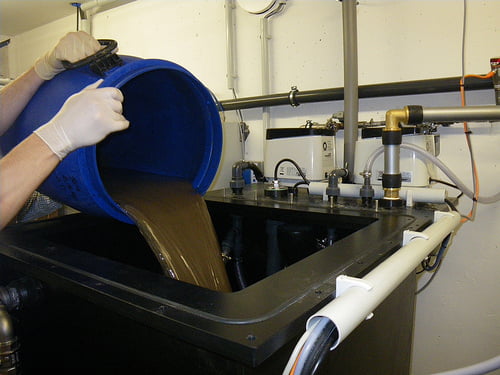It may look like mud, but sludge – the “leftover” semi-solid part of the stuff we flush down the toilet or pour down the drain, is a creature unto itself. Far more toxic than plain old mud, sludge has the potential to bust a city’s budget, as it needs to be treated and disposed of. But it doesn’t have to be that way; in the hands of Israeli startup Global Recycling Projects Ltd. (Ecoarrow), sludge pulls its own weight – providing “free” energy by turning sludge into – electricity!
It’s a neat trick that GRPL pulls off using solar power – giving the system the distinction of being truly “green,” using solar energy to produce the power needed to operate the system – unlike many other green projects (such as electric cars) which may produce environmentally sound results, but have a large “carbon footprint” in the energy they require to produce those positive results.
The system – designed to be built adjacent to a waste disposal site – is based on harnessing solar energy to power a solar biomass reactor, which turns the sludge into gas that powers electricity-generating turbines. A field of tracking mirrors (called heliostats) directs concentrated solar radiation towards the facility, powering the biomass reactor. With this system, waste processors can get rid of their sludge efficiently and easily, avoiding the need to dump it in landfills (a very expensive proposition these days) – and possibly even earning money from their sludge, selling electricity to local utilities.
And if that weren’t enough, GRPL even has a way to nudge sludge that just won’t go into the processing plant; the company has developed a unique robot – “the only one of its kind in the world,” says company CEO Boaz Zadik, who was at Watec 2011 this week showing off the project – which can actually enter tough sludge patches that no human, or even lesser robot, dare approach.
“Sludge is often toxic, which makes removing it essential, if a facility is going to continue operating and not get shut down by environmental authorities, says Zadik. “But removing that sludge is very difficult and time consuming.”
Not with GRPL’s Predator robot, though. “The robot has extraordinary pumping capabilities: up to 200 meters cubed per hour. It is activated by remote control making it operable a safe distance away from the actual working area to protect the operators. Explosion proofing can enhance safety,” Zadok says.
…
To continue reading this article, click here.
Via israelnationalnews
Photo by Sustainable sanitation
Related posts

Resilient And Nutritious New Plant-Based Milk Aims To Make A Splash

Chocolate From Cultivated Cocoa Comes Without Environmental Toll

Plastic Fantastic: Startup Takes PVC Back To Its Crude Oil Roots




Facebook comments